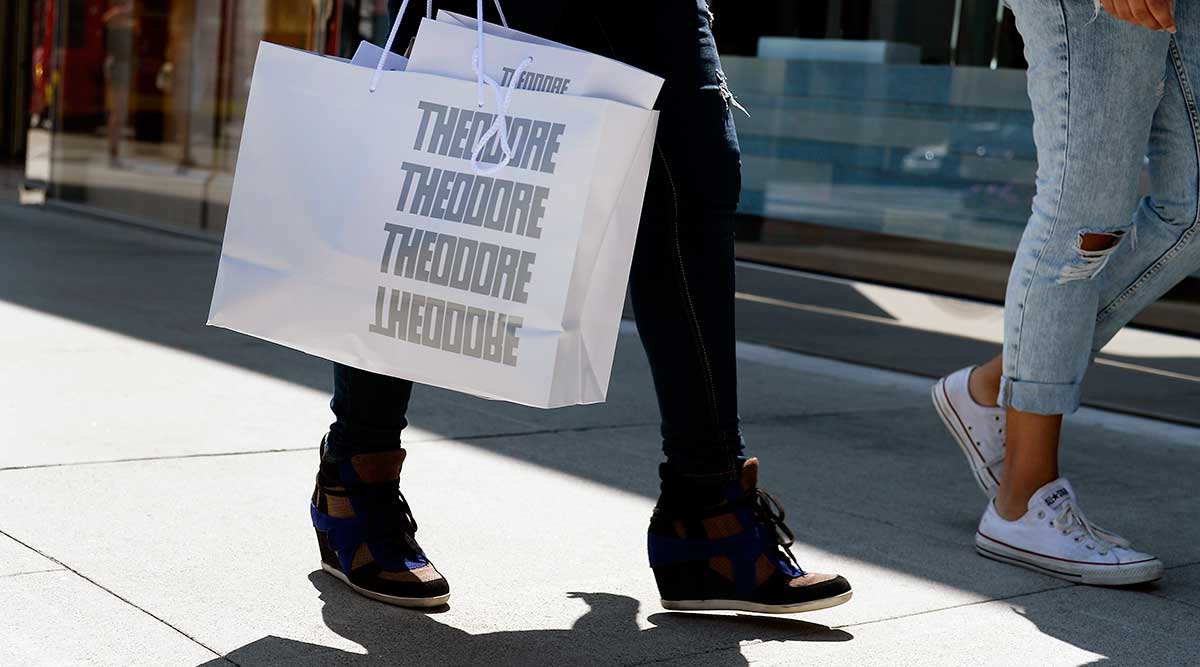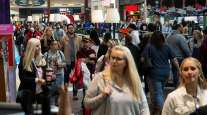Americans Kept Spending in June to End Stronger Second Quarter

American households kept spending in June, capping a stronger quarterly performance for the biggest part of the economy.
The 0.2% increase in purchases followed a 0.7% May advance, Commerce Department figures showed Aug. 3 in Washington. The June gain matched the median forecast of economists in a Bloomberg News survey. Incomes climbed 0.4% for a third month.
Americans, enjoying a hiring pickup and no longer fettered by high prices at the gas pump, helped the economy stir last quarter after an early-year slumber. A tempering of spending at the end of the quarter shows stronger wage growth is probably needed to convince more consumers to open their wallets with greater frequency and allow the economy to build momentum.
“A lot of consumers are still in a wait-and-see attitude before they get too carried away with any significant increase in their spending,” Russell Price, senior economist at Ameriprise Financial Inc. in Detroit, said before the report. “It’s really a matter of people getting more confident with the overall economic outlook.”
The June gain helped spending increase in the second quarter at a 2.9% annualized rate, up from a 1.8% pace in the first three months of the year and stronger than the 2% average from 2010 through 2014.
Projections for June consumer spending in the Bloomberg survey of 62 economists ranged from no change to a 0.4% increase. The previous month’s reading was initially reported as a 0.9% advance.
The Bloomberg survey median called for incomes to rise 0.3%. May’s income reading was revised down from a previously reported 0.5% gain.
Disposable income, or the money remaining after taxes, rose 0.2% in June from the prior month after adjusting for inflation. The saving rate climbed to 4.8% from 4.6% in May.
The data showed that after adjusting for inflation, to generate the figures used to calculate gross domestic product, purchases were little changed in June after a 0.4% gain in May.
Sustained momentum in consumer purchases will be needed to keep U.S. growth chugging along. The economy grew at a 2.3% pace in the second quarter as household spending advanced more than projected, Commerce Department data showed last week.
Spending on durable goods, including automobiles, fell 1.1% in June after adjusting for inflation, following a 1.3% jump in May, according to the Aug. 3 report.
The auto industry has remained a bright spot for consumer spending and factory activity. June sales of cars and light trucks totaled 17.1 million at an annual rate, capping the strongest quarter since 2005, after a 17.7 million pace a month earlier, based on data from Ward’s Automotive Group.
Purchases of nondurable goods, which include gasoline, were little changed, while outlays on services advanced 0.2%.
The report also showed the price index tied to consumer spending increased 0.2% in June from the prior month. It rose 0.3% from June 2014. This inflation gauge is preferred by Federal Reserve policymakers and it hasn’t reached their 2% goal since April 2012.
Stripping out the volatile food and energy categories, the price measure climbed 0.1% from May and rose 1.3% in the 12 months ended in June.
“Inflation is anticipated to remain near its recent low level in the near term,” the Fed officials repeated in a July 29 statement at the conclusion of their two-day meeting in Washington. The central bankers said they see inflation rising “gradually” toward their goal “as the labor market improves further and the transitory effects of earlier declines in energy and import prices dissipate.”
While lower fuel costs are one reason consumers are spending, gains in worker pay have been lackluster. Wages climbed in the second quarter at the slowest pace on record. The 0.2% advance was the smallest in data going back to 1982 and followed a 0.7% increase in the first quarter, the Labor Department said July 30.
“Despite some improvement in consumer confidence and the jobless rate over the past several years, the middle class has been largely left out of the economic recovery,” Campbell Soup Co. CEO Denise Morrison said on a July 22 conference call. “Volatility and uncertainty persist, and consumer spending remains cautious.”




